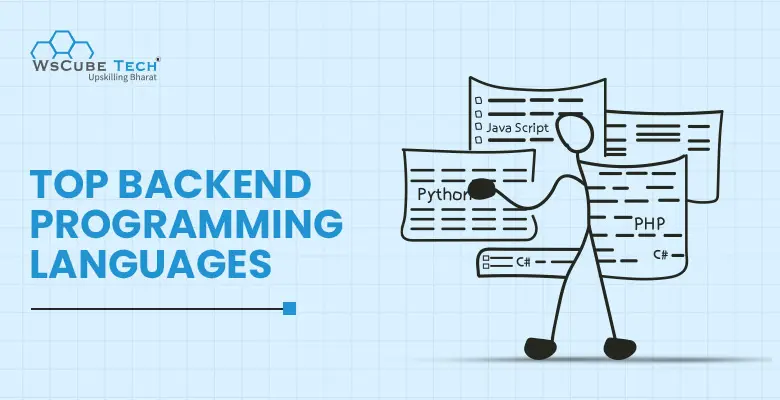Most of our tasks today are done on computers or other smart devices. We all use one or the other kind of social media app. And every time you click on a link or scroll through your reels, it displays the relevant information on your screen. But have you ever been curious about how all this happens?
All of this, and the excellent user experience, are possible due to the backend of apps. There are backend languages that make the user experience of any application seamless and are responsible for the development of such sturdy backends.
Web development generally comprises front-end and back-end development. Front-end languages like HTML, CSS, and JavaScript serve the client side and what’s on a screen, while back-end development supports the server side or the functionality of the website or app. Learning about back-end languages makes you become a more complete development professional.
You are certainly in the right place if you want to know more about the most popular backend programming languages and their applications. We will discuss almost everything related to the backend and backend languages here.
What is Backend Development?
Backend development is an important aspect of web development that focuses on creating and maintaining the server-side components of a website or web application. It’s the part of the development process that handles the “behind-the-scenes” functionality, data management, and the server’s interaction with the client-side (front-end) of a website.
Backend developers manage the server where the website or web application is hosted. This includes setting up and configuring the server, ensuring its security, and optimizing its performance.
Backend developers design and maintain the database systems that store and manage the website’s data. This involves creating database schemas, optimizing database queries, and ensuring data integrity.
The developers also write code to handle server-side logic, which includes processing user requests, authentication, authorization, and business logic. They determine how data is retrieved and presented to the user.

What Are Backend Programming Languages?
Developers use backend programming languages to program the internal systems operating in any web application’s background.
The software’s backend is a part not visible to the user. Top backend programming languages have specific features that ease communicating with the server, through which program users give and receive information and data.
If you are a backend developer or want to work as a backend developer, you might use these architectural programming languages and frameworks for different projects, like:
● Websites
● Interactive online tools
● Mobile apps
● Desktop apps
● Web servers
● Software prototypes
● Online games
● Security features
● Data collection
● Networking
Also read: Front End Languages for Web Development in 2025
Types of Backend Languages
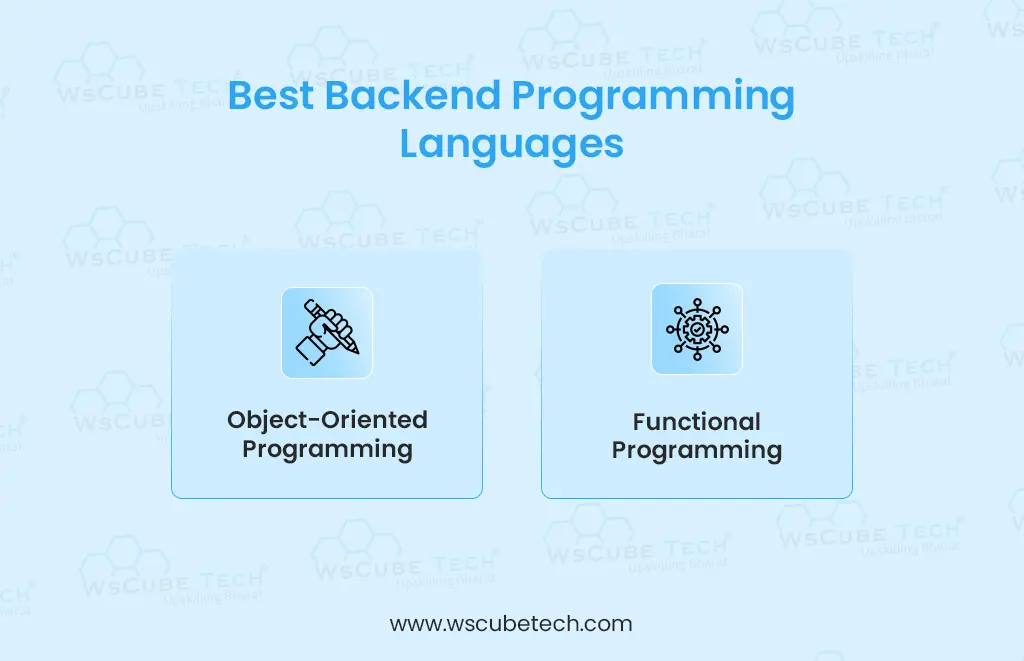
Usually, backend programming languages are categorized into two major types:
1. Object-Oriented Programming
This approach emphasizes object or data formations instead of using logic. Here, the object is a data field in functional programming with uncommon characteristics.
Object-oriented programming is best when developers work in teams on big and complex projects. PHP, Java, Ruby, and Python are the common examples of OOP backend programming.
2. Functional Programming
FP back-end programming focuses more on declarations and results than the programming procedure. It backs parallel, immutable data and doesn’t have any side effects.
To improve productivity & modularity and sort out scripting issues in the most straightforward ways, FP is the best option. SQL, R, Haskell, and F# are the best FP backend programming languages.
Best Backend Languages (2025 List)
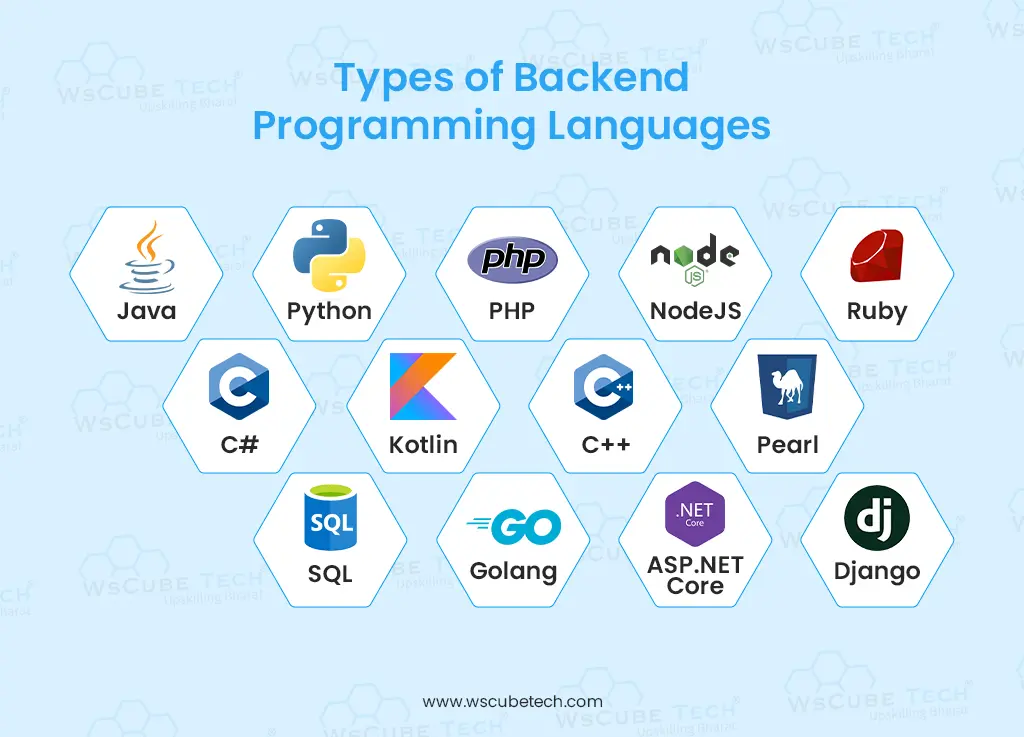
In web development, one should first select the backend programming language and determine how it affects the project.
So, if you are developing a website, web app or software, here are some of the best programming languages for backend you can use.
1. Java
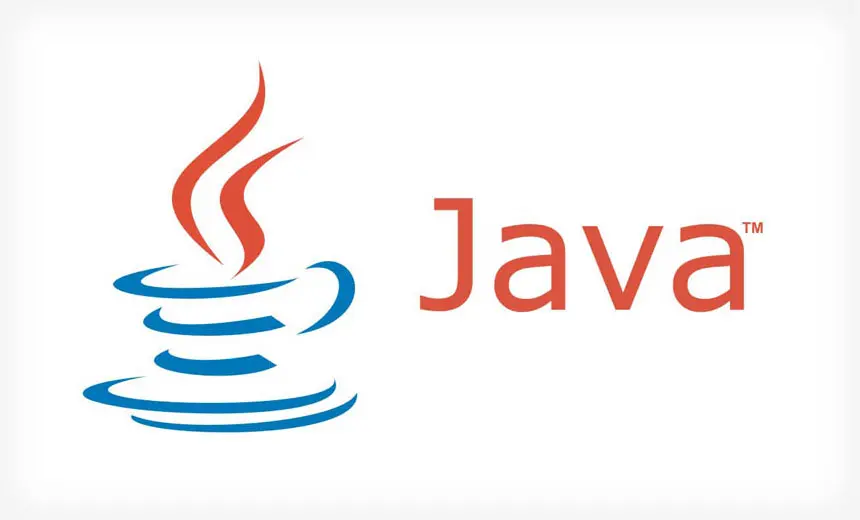
Java is a versatile, object-oriented programming language. It has free access and runs on any platform. Also, it shares many features with C++ and has advanced and simplified capabilities.
Why learn Java?
Learning Java makes you a well-rounded programmer. Being a popular language worldwide, it is in high demand among employers. It also helps you develop skills businesses always seek in their developers.
Features
Simple: Java eliminates all the difficulties of C++, such as operator overloading or pointers.
Secured: For humans, Java bytecode is difficult to understand after compilation preventing any untrustworthy sources from performing activities in the sandbox. It develops virus-free, tamper-free systems or applications.
Dynamic: It supports dynamic memory allocation. This minimizes memory waste and improves the application’s performance.
2. Python
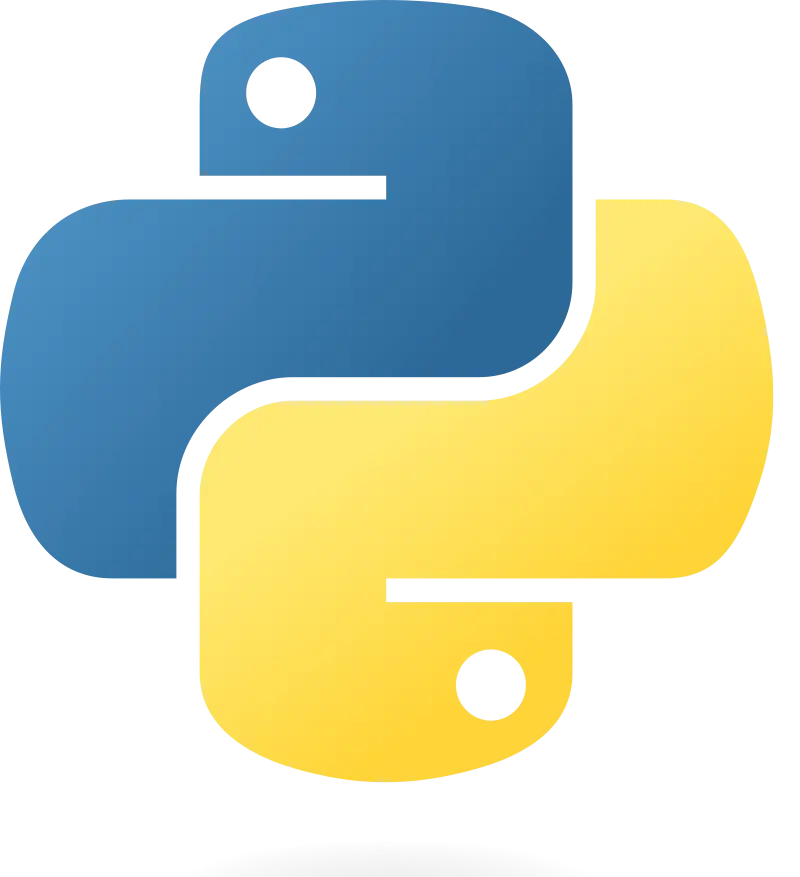
Python is a high-level backend programming language. It is famous for its clear syntax object-oriented design with the ability to allow developers to rapidly create applications.
Why learn Python?
Python has endeared itself to many professionals because of its object-oriented features, flexibility, and adaptability. Software engineers, machine-learning experts, Data scientists, and hackers love Python.
Features
Smooth learning curve: Python language has a minimal syntax. This makes it easy to learn and use as a computer language. Also, it is utilized for novices and converts since it resembles ordinary English writing and reading.
Automation: Python is widely known for its ease of automation because of the plethora of tools and modules. In software testing, Python excels in efficiency and speed with minimal code.
Open-source libraries: Python has an active community developing various open-source libraries and providing user support. This means Python is an excellent choice for almost any purpose.
3. PHP
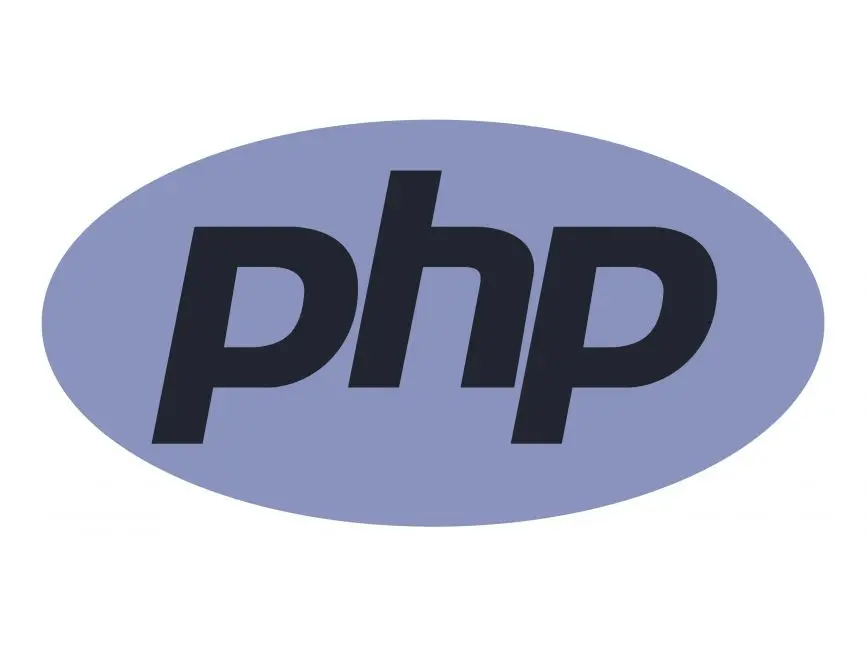
PHP Hypertext Preprocessor is an extensively used open-source server-side programming language. It helps create dynamic web pages.
Why learn PHP?
PHP is a server-side programming language. It is an excellent backend programming language for creating dynamic web applications, as it works well with HTML and databases.
Features
Cybersecurity application: Often, cybersecurity uses PHP to manage secure data sharing between servers and users, enhancing security while transferring data.
Diversity of output: It generates PDF, Flash, and simple text files without requiring new languages. PHP can build forms that collect user information, deliver dynamic page content, or send cookies to identify returning visitors and start remarketing efforts.
Ease of learning: Like HTML, PHP has built-in features to reuse code blocks you create. This makes it easier to learn than other programming languages.
Also read: Top 10 Best Programming Languages to Learn in 2025
4. NodeJS
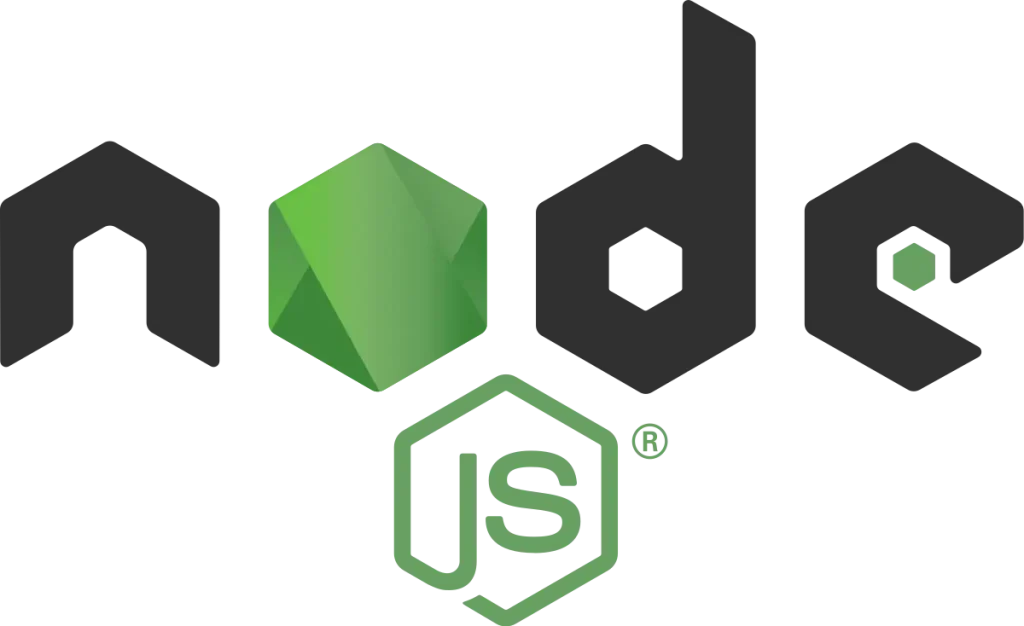
Node.js allows JavaScript to be used on a web app backend and in a serverless architecture. This presents an intersection of frontend and backend technologies, as JavaScript is only used on a web application’s frontend, client-side part.
Why learn Node.js?
Using JavaScript, Node.js makes sending and syncing data between the server and client sides easy. Using the same language makes code cleaner and more consistent. Further, you can use the same naming convention, tools, and best practices.
Features
Performance and Scalability: Node.js is grounded on the Chrome V8 engine. It enables Node to provide a server-side runtime environment. This compiles and executes JavaScript at breakneck speeds. The Chrome V8 engine converts JavaScript into native machine language instead of interpreting or running it as a bytecode,. This gives Node a speed advantage over other languages like Python and Ruby.
Scalable: NodeJs handle numerous requests simultaneously. It has a cluster module to balance the load across all active CPU cores.
Cross-platform compatibility: NodeJS is a versatile system used on Unix, Linux, Windows, macOS X, and mobile devices. When paired with the correct package, NodeJS can generate a self-sufficient executable.
5. Ruby
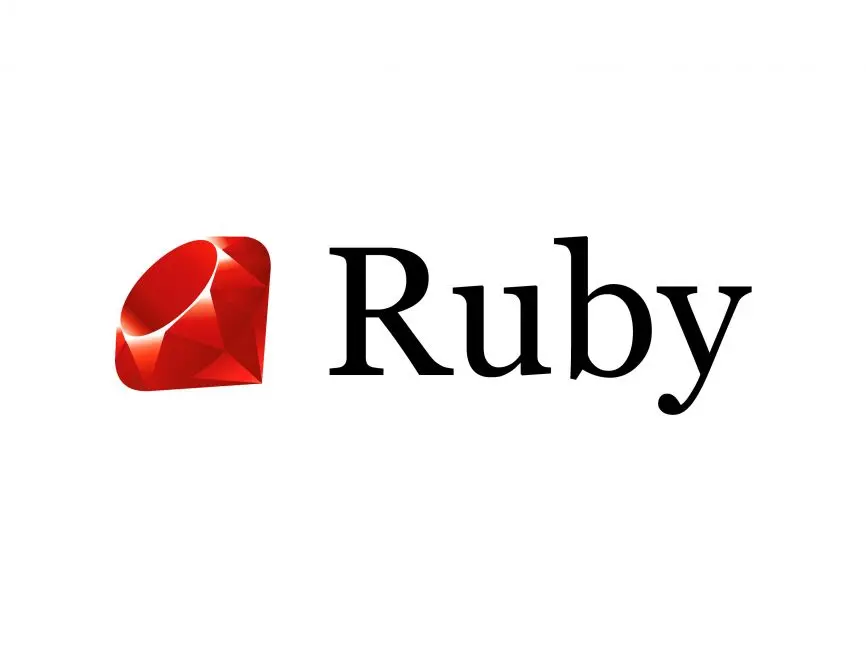
Ruby is a well-known, versatile programming language. It is used for web scraping, site building, command-line tools, automation, and data processing. Released in 1995 by Yukihiro Matsumoto, Ruby is often called a language of careful balance.
Why learn Ruby?
Ruby is a versatile, in-demand programming language for web development, data processing, scripting, DevOps, static site generation, and more.
Features
Convention over configuration: Ruby reduces the code programmers need to write.
ActiveRecord: Ruby has an ORM library. It enables easy database interactions.
MVC architecture: Ruby programming language has a modular and scalable design.
6. C#
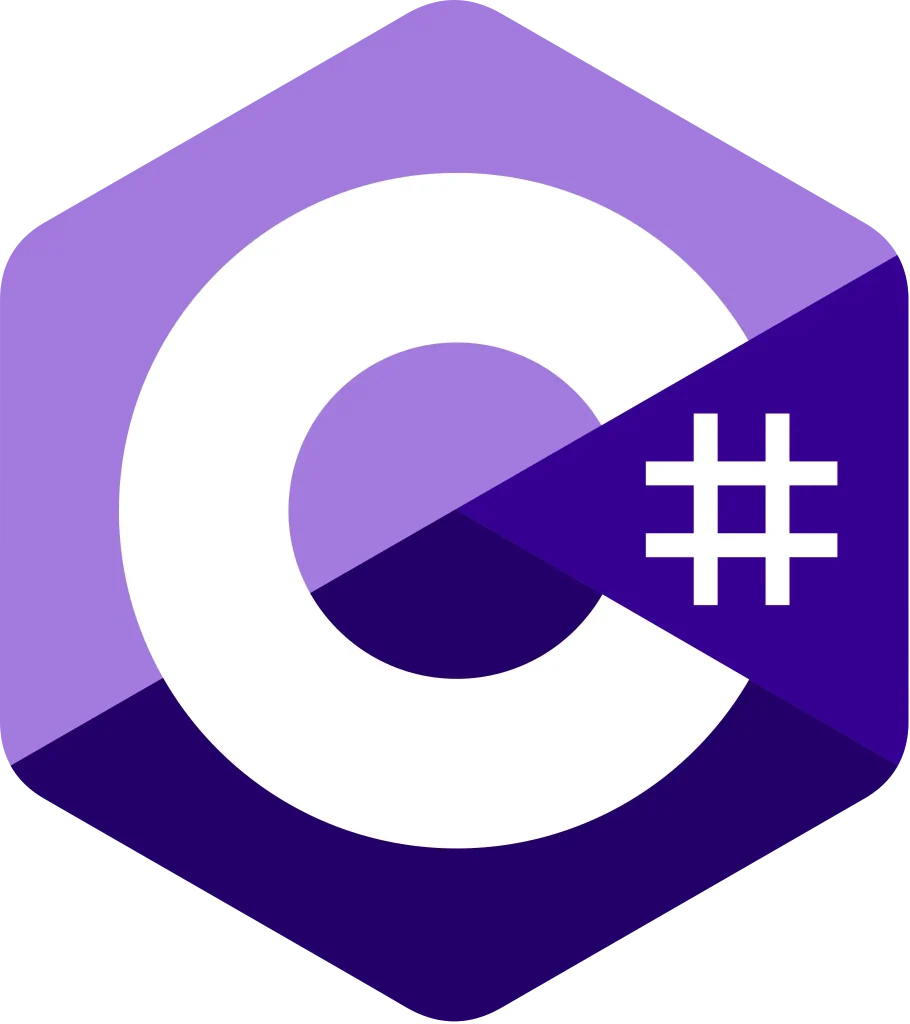
C# is a Microsoft object-oriented programming language. It enables the construction of more complex programs as it was developed from the necessity for a robust object-oriented language. C# is a 2002 release with various applications, including desktop applications, web development, and all phases of scripting languages.
Why learn C#?
C# is widely used for several applications, including game creation, mobile apps, and business software.
Features
Type safety: C# enables type checking during compile time. This prevents errors during runtime.
Memory management: C# manages memory automatically, preventing memory leaks.
Support LINQ: C# enables easy data manipulation and querying.
7. Kotlin
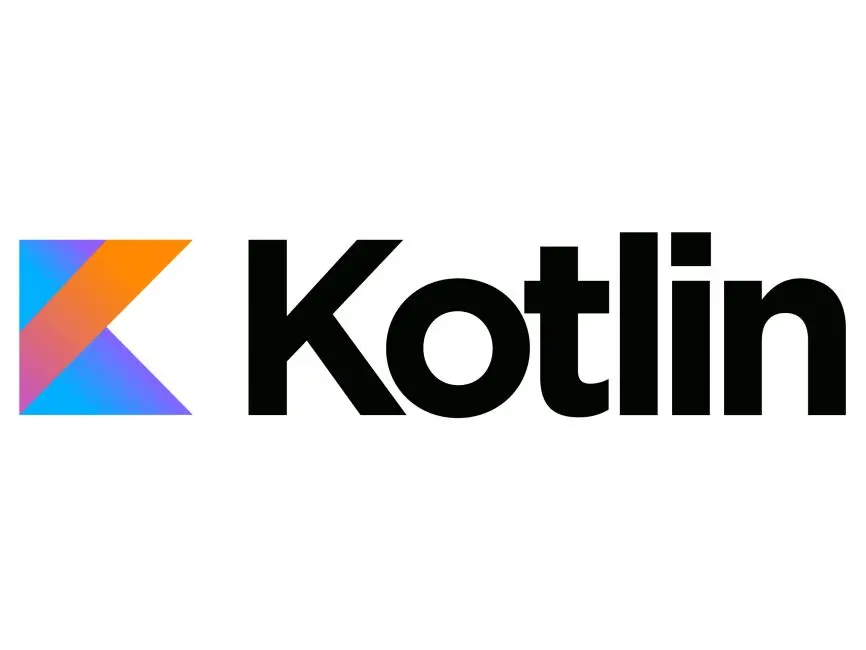
Kotlin language runs on multiple platforms. It is concise, safe, interoperable, and easy to use with tools. As a statically typed programming language, it primarily uses the Java virtual machine and JavaScript or LLVM compiler infrastructure.
Why learn Kotlin?
Kotlin is popular among developers for its straightforward syntax and extensive features. Due to its compact codebase, it is a stable and consistent language for code development. You can easily detect and resolve codes during compile time before running the code.
Features
Write less code: Less code equals fewer bugs when done correctly. You may concentrate on more essential tasks by delegating routine chores to the framework.
Fully compatible with Java: Kotlin’s beauty is that Android developers can use all Java frameworks and libraries while writing more concise code. You don’t have to choose between two languages while building a mobile product. Also, migrating the applications from Java to Kotlin is always an option.
Concise: Kotlin drastically reduces the boilerplate code. With inferred syntax, you can declare variables without stating their type explicitly. This eliminates the entire errors class before compilation even happens.
Also read: How to Become a Flutter Developer? Full Roadmap
8. C++
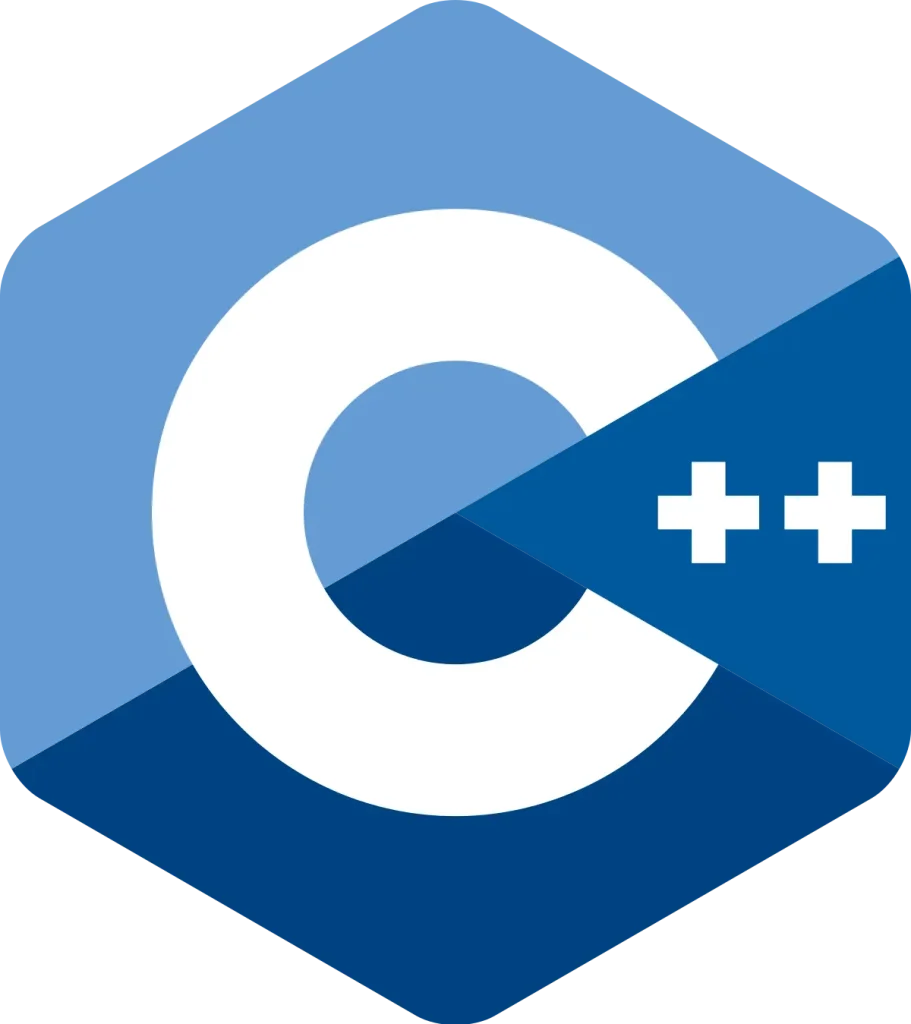
C++ is an object-oriented programming language with low system dependence. It is so compatible with C that it will compile over 99% of C programs without altering a source code’s line. Although C++ is a well-structured and safer language than C, it is OOP-based.
Why learn C++?
C++ is nearly identical to C. It runs most C programs unchanged. However, it is a safer language for systems programming and game development compared to C, as it uses OOP principles.
Features
Speed and high performance: C++’s quickness makes it a favorite of software developers everywhere. An upgraded form of C language, C++ is a complex back end web programming language to learn for newbies, but it is powerful and versatile.
Platform-independent: C++’s portability allows developers to write software to run on several operating systems without changing the source code.
Memory control: C++ provides functions to manage memory efficiently, including dynamic memory allocation and pointers.

9. Pearl
Perl programming language is high-level, general-purpose, interpreted, and dynamic. Since there’s no official full form of Perl, the widely used expansion is “Practical Extraction and Reporting Language. ”
Why learn Perl?
Perl is syntactically similar to other languages and is easier to code and learn. You can write programs in any text editor like Notepad++.
Features
Text-Processing: Perl has remarkable text manipulation capabilities. This allows it to produce reports from numerous text files quickly. It can convert files to other formats, too.
System Administration: Perl simplifies system administration tasks. You can complete all the system administration tasks in one language instead of depending on many languages. Perl is the most versatile backend programming language for web programming, web automation, and GUI programming.
Easy to start: Perl resembles standard programming languages such as C and C++. Therefore, Perl is easy to learn for anyone interested in coding.
10. SQL
Structured Query Language manages relational databases. A relational database is a database that tracks and makes available data points connected. We can store data in an SQL table and access or change it.
Why learn SQL?
SQL is popular due to its usefulness in data processing. The ease of learning and beginner-friendliness make it an ideal choice for anyone looking into coding or data processing.
Features
Centralized Database Control: The database control is integrated directly into the program. Hence, the chances of data corruption or human error during the loading process are absent.
Data Recovery and Restore Features: SQL Server has data recovery and restore features that programmers and developers use when there is a problem with processing data in a database.
Database Security Management: Besides powerful security capabilities, Microsoft SQL Server has excellent data protection management.
11. Golang
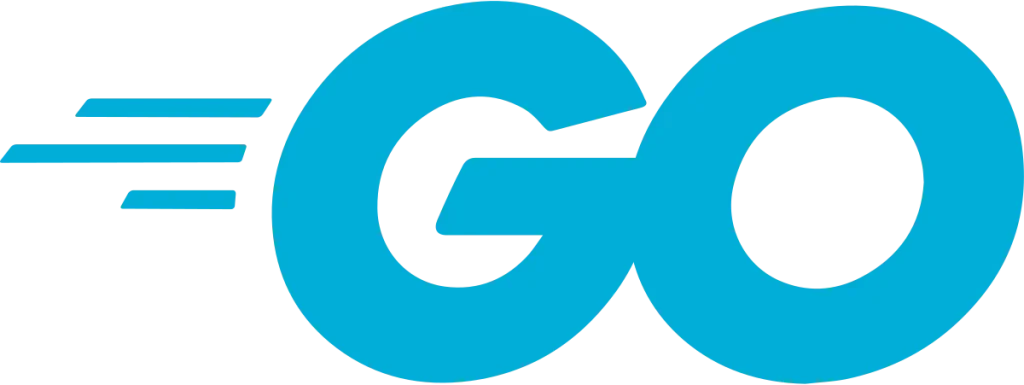
Golang is a Google-originated open-source programming language. Go creators wanted developers to have a programming language that allows them to create applications quickly and easily. Golang is used in servers, web development, and command-line interfaces. It aims to be simple, high-performing, readable, and efficient.
Why learn to Go?
Learning Go is more accessible if you have prior experience with C or Java languages. Despite this preexisting knowledge, Golang is globally recognized as more superficial to learn.
Features
Easy learning curve: Go has a simple syntax and minimal structure, making it easy to understand.
Built-in concurrency: Go has built-in support for concurrency. This allows multiple processes to run simultaneously.
Robust standard library: The standard library offers developers a lot of reliable and well-tested code.
12. ASP.NET Core
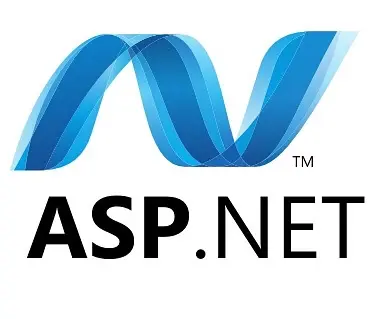
ASP.NET is a Microsoft-developed open-source software. It is used for building web applications, services, IoT applications, and mobile back-end components. The major difference between ASP.NET and ASP.NET Core is that they are cross-platform. This enables us to run on .NET Core or Net Framework.
Why learn ASP .NET Core?
ASP.NET Core is a re-imagined ASP.NET framework that uses modern software design ideas. It has incorporated several mature, stable, and reliable .NET Framework features.
Features
Web Apps and Services: You can create reliable and efficient web applications with HTML, CSS, and Javascript.
Run .NET in Browser: With Blazor and C#, you can create interactive web UIs that run .NET in the browser directly.
Internet of Things: You can develop cutting-edge apps or background services for IoT devices.
13. Django
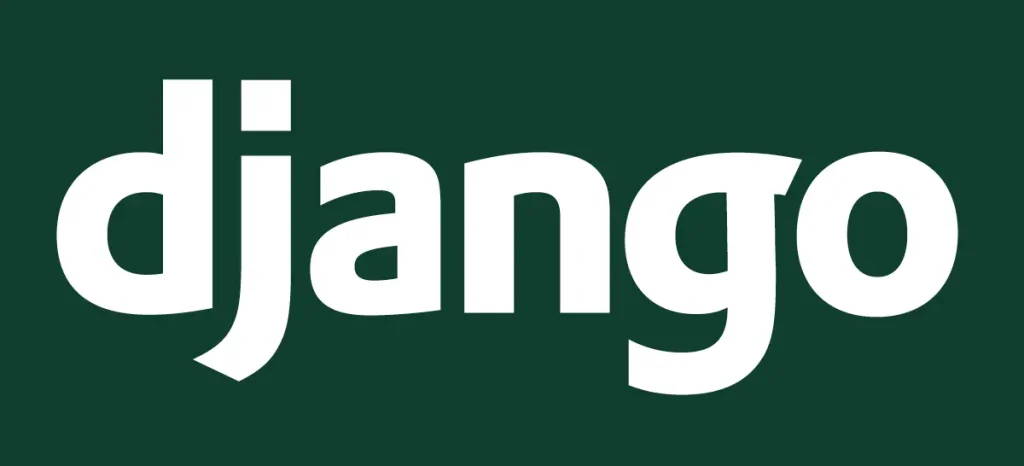
Django is an open-source Python web framework. It helps develop websites quickly, securely, and with clean design. Django is a web app framework that provides all the components needed for application development. Instagram, BitBucket, Mozilla, and other popular sites are created with the Django framework.
Why learn Django?
The Django framework is a wonderful choice for creating software because it’s a web framework with various essential features to create an app more quickly.
Features
Easy to use: Django framework uses Python. Widely used, its applications are free and open-source.
Fast and simple: Django has the advantage of rapid development principles. This allows developers to work on various iterations without starting from the beginning.
Excellent documentation: Django’s extensive documentation makes it easy to develop different real-world applications.

FAQs Related to Backend Languages
Backend programming involves developing the server-side components of a web application, responsible for data processing, logic, and managing the server operations.
Commonly used backend languages are Python, Java, PHP, and Node.js. You can choose the backend language based on your project requirements and use cases, such as performance, scalability, and web development.
Backend developers are responsible for server management, database management, server-side logic, creating APIs, user authentication and authorization, performance optimization, security, and more.
A backend framework is a pre-built collection of tools, libraries, and patterns that simplifies backend development. Examples include Django (Python), Ruby on Rails (Ruby), and Express.js (Node.js).
An API (Application Programming Interface) is a set of rules and protocols that allows different software components or systems to communicate with each other. In backend development, APIs are used to enable interactions between the server and clients, such as a web or mobile application.
Backend developers implement security measures like encryption, user authentication, access control, input validation, and protection against common web vulnerabilities like SQL injection and cross-site scripting (XSS).
Databases store and manage the application’s data. Backend developers design database schemas, optimize queries, and ensure data integrity.
Front-end development focuses on the user interface and user experience, while backend development focuses on server-side logic, data management, and server operations.
Scalability ensures that the application can handle increased traffic and data as it grows. Backend developers design scalable architectures to accommodate expanding user bases and loads.
Version control systems like Git are used to track changes in code, collaborate with other developers, and maintain a history of code revisions, facilitating efficient and error-free development.
To become a backend developer, you’ll need to learn a backend programming language, understand databases, and gain experience with backend frameworks and tools. Online web development courses, tutorials, and practice projects can help you get started.
To choose the right backend language for your project, consider various factors, such as performance requirements, scale, team expertise, community support, and the compatibility of the language with selected frameworks and tools.
You must start with something easy like Python, which is highly recommended for beginners due to its simple syntax, extensive libraries, and frameworks.
Learning backend languages is not challenging, but you need to dedicate 2-3 months to learning the chosen language and work on various hands-on projects to gain efficiency. You can master any backend language in at least 8-12 months.
Backend languages use frameworks and libraries to connect to databases, manage data, and execute queries. For example, Node.js uses Sequelize, and Python uses SQLAlchemy.
If you are looking for a backend language to handle real-time applications, use Node.js, as it has a non-blocking architecture and WebSocket support.
Although the performance of a backend language depends on various factors like project size, scalability, compatibility, and experience, Java and Golang are known to ensure the most efficiency for large-scale applications.
The most sought-after backend languages across various industries are Python, Node.js, and PHP.
Conclusion
The digital world is evolving at an unprecedented pace. With this, the demand for efficient, powerful, and advanced backend technologies has never been greater. Backend web programming languages influence the project closure speed and make a difference in the success of your complex web or mobile application. So, you must stay diligent and pay close attention to your project’s unique demands.
When choosing the best backend programming languages for your project, there is no one-size-fits-all solution. Each language has its strengths and weaknesses, so the best choice for you depends on the specific goals of your project. Whatever language you choose, research ahead to ensure it’s the best choice for your project.



